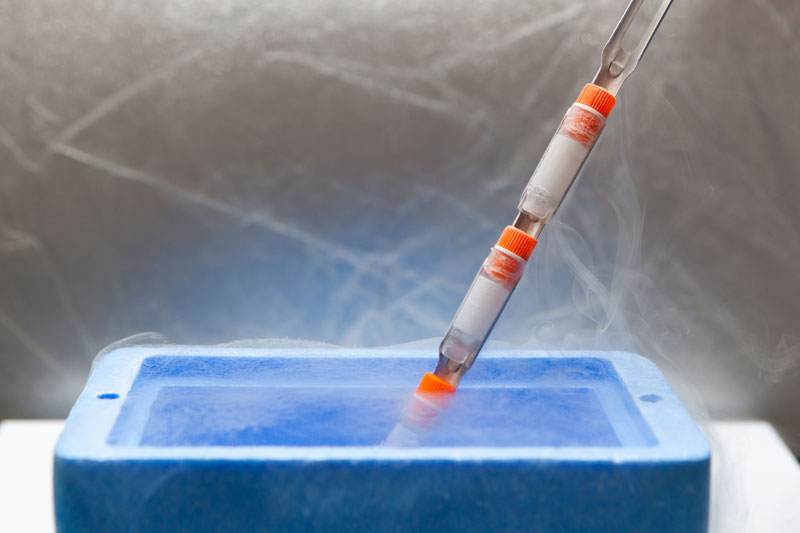In this series of three blogs, we present different assays and techniques that can be used to narrow down the mode of action of compounds or cellular proteins that interfere with the virus life cycle, and we focus on procedures that – with some optimisation – can be applied to different viruses. In the first blog, we covered assays that explore the early stages of viral entry and fusion; in the second, we looked at viral replication; and in this third and final viral replication-themed article, we will follow assembly, release, and spread. Ready to follow where your virus gets stuck?
How to look at… Part 3/3: Viral assembly and release
Gaining access to the cell is a prerequisite to establishing infection. Replication is when a virus subverts the cell to generate multiple copies of itself. Still, nothing would happen if, when coming to the end of the production line, a virus wasn’t able to assume its original shape, leave the factory, and spread. Not all viruses exit the cell in the same way. Some elegantly trickle out in endocytic vesicles; others assemble at the plasma membrane ready to be pinched off and go; others wait for the final lift, when the cell bursts open and releases them to the outside environment. Some are even propelled by actin tails on the cell surface. How do we study these final moments when a virus reacquires its identity?
Seeing is believing: the power of electron microscopy
As for viral entry, electron microscopy (EM) is a potent tool to detect new virus particles at the site of assembly. Crisp pictures of viruses in the ER, or budding from the plasma membrane, or being wrapped in cytosolic factories are available. EM not only allows us to see where the virus is, but also what it looks like, and how uniform it is. While we are used to imagining viruses as regular and uniform shapes, it is now clear that the opposite is true and, even in the same prep, some viruses assume very different shapes, from spherical to elongated, to rod-like. How viral shape affects infectivity is still unclear, but it is likely to be an important and fascinating area of research that EM can help clarify.
Particles or infectious particles?
Just because a virus looks the expected shape doesn’t mean that it is infectious. Entire logs of particles are released that cannot infect another cell, and how many of these defective particles exist depends on the virus and the conditions of growth. Many viruses are known to have a high “particle per plaque-forming-unit (pfu) ratio”, meaning that out of thousands of new virions, only one will be infectious. In the case of flaviviruses like dengue, this is due to inefficient furin cleavage that prevents full maturation of the envelope protein; in the case of influenza, it may be due to the incomplete incorporation of all genome segments.
Particles can be counted in many different ways. Specific instruments have been developed to accurately count nanometre wide objects, including viruses, but cheaper options are available. Lysed supernatant can be analysed by ELISA or qRT-PCR. A standard of a known amount of protein or gene must be run in parallel for accurate quantification. Knowing the number of proteins or genome copies in a virion will then allow estimating the number of particles in the preparation. For very pure preps containing only virus particles, also a simple protein assay can help: if the molecular weight and the number of copies of each protein that makes up the virus is known, it is possible to calculate the number of virus particle fairly accurately.
To quantify infectious particles, plaque assays or immunofocus assays are the gold standards. A serial dilution of the supernatant is added to a monolayer of permissive cells. Covered by a solid or semisolid overlay, the virus will spread cell-to-cell in plaques, which can be revealed by crystal violet staining or by immunolabelling if the virus is poorly cytopathic. TCID50 assays (see here) are used to determine pfu/ml, as the dilution of virus that infects or kill half of the cells can be converted with a simple formula (TCID50 × 0.7).
The particle-to-pfu ratio can be an important parameter to understand whether a treatment or a restriction factor has an effect on virus assembly or release when compared with an untreated control. If the number of particles/proteins/genomes are the same, but the pfu decreases, this might indicate a defect in assembling a functional virus. If they both decrease but viral replication is not affected (see here), this might suggest a defect in the release, assembly, or both.
Virus spread
Spread encompasses all stages of viral infection, as it is given by multiple rounds of entry, replication, and release. Viruses can spread cell-to-cell or cell-free in the media, reaching cells further away. The kinetics of this spread can provide important information on the mode of action of a drug or a viral protein, but also the size of plaques or foci can be indicative of defects in virus replication or release. Similar information can be obtained through fluorescence imaging on tagged viruses or upon immunofluorescence staining: live imaging, in this case, can be particularly informative.
Technology and creativity
This takes us to the end of our journey into a virus life cycle, and while the assays that we have discussed have general applications, many virus-specific assays exist, and even more, can be designed. As we narrow down into the mode of action of a specific antiviral, the only limits are the tools and the resources available. Our goal at VRS is to make resources, technologies, and expertise available to you to design assays that better deal with the question you are trying to answer. Contact us to find out what we can help you with, and to test new possibilities!




